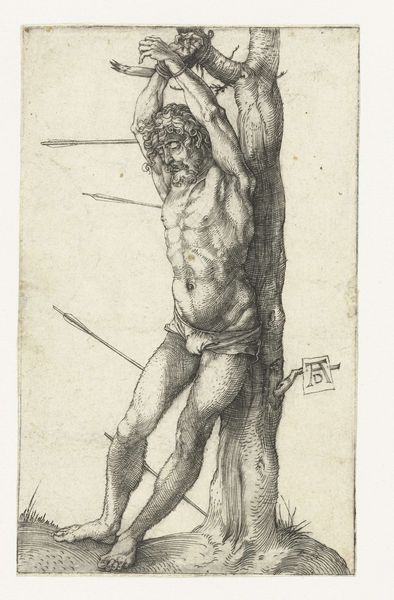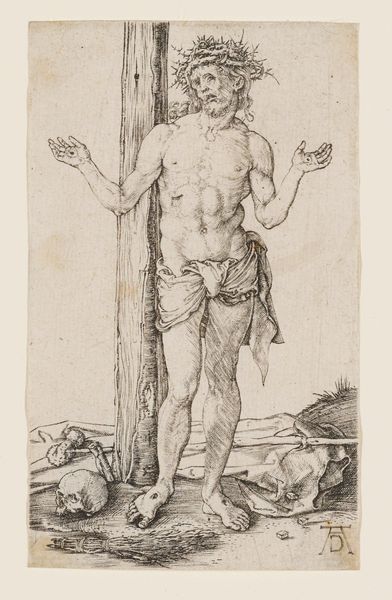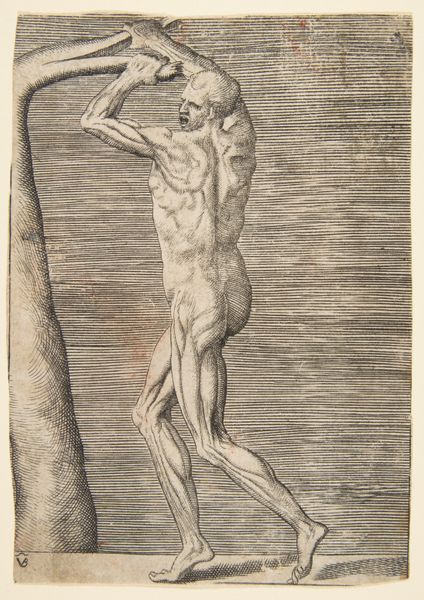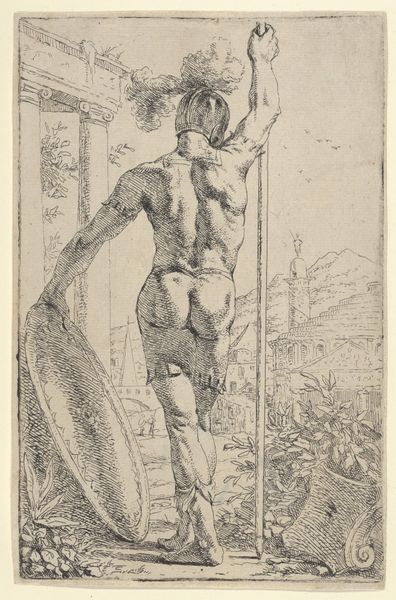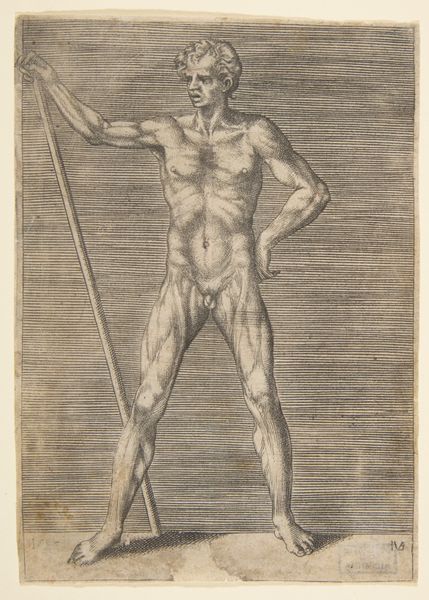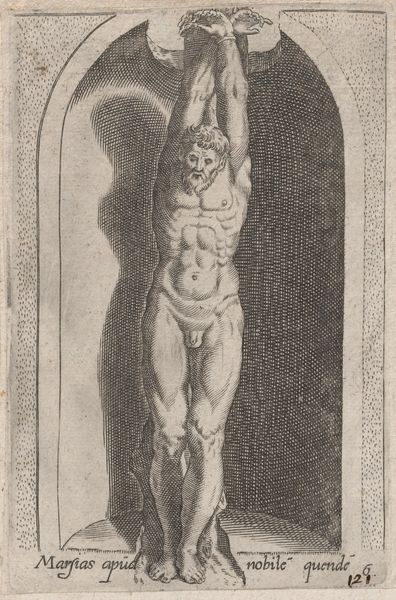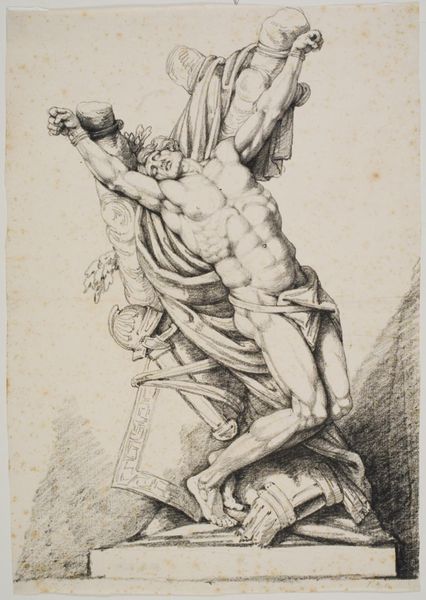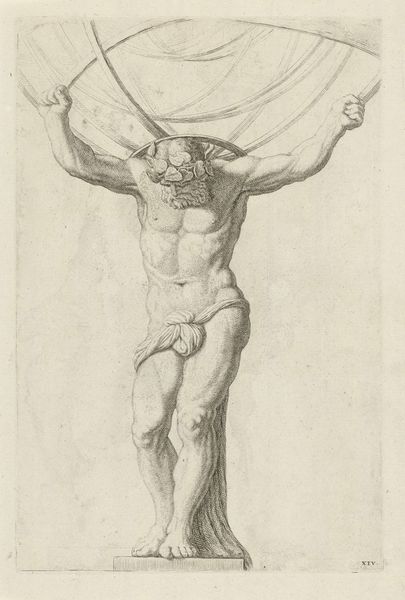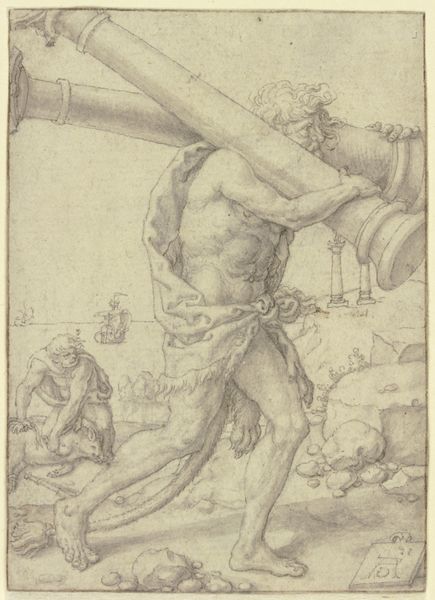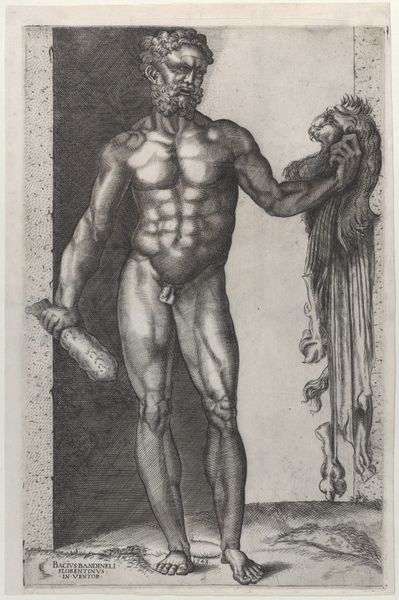
Saint Sebastian Tied to a Tree (reverse copy) 1485 - 1600
0:00
0:00
drawing, print, etching, engraving
#
tree
#
drawing
# print
#
etching
#
landscape
#
figuration
#
history-painting
#
nude
#
engraving
Dimensions: Sheet: 4 5/8 × 2 13/16 in. (11.7 × 7.2 cm)
Copyright: Public Domain
Editor: Here we have "Saint Sebastian Tied to a Tree," an etching and engraving print by Albrecht Dürer, created sometime between 1485 and 1600. It strikes me how the stark lines create a feeling of tension, almost a visual dissonance, in portraying such a tragic scene. What compositional elements stand out to you most in this piece? Curator: The tension you observe is primarily located in the opposition between the static verticality of the tree and the dynamic torsion of Sebastian's body. Note how the tree acts as a grounding structure against which the figure's suffering is highlighted through line and form. Also observe that the implied diagonal lines formed by the arrows further fragment the composition. Editor: That makes sense. The arrows definitely disrupt the sense of stability. So, would you say that Dürer is primarily interested in formal elements rather than the religious narrative itself? Curator: The religious narrative does provide the ostensible subject, however the artistic decisions emphasize a certain aesthetic effect. Dürer's virtuosity in handling line, creating depth and texture, becomes a subject in itself. Note also the play of light and shadow, achieved through meticulous cross-hatching. Does this visual treatment intensify or deflect from the pathos? Editor: I can see how that meticulousness creates a layer of artistic detachment, even as it renders the scene realistically. It’s as if the suffering is being framed and aestheticized. I never thought about engravings having so much artistic intent! Curator: Precisely. It's not simply documentation, but a conscious manipulation of visual elements to evoke a specific response, or perhaps to reveal a particular order, that makes the artwork significant. The interplay of subject matter and formal execution allows for multiple readings. Editor: This focus on formal structure has completely changed how I perceive Dürer’s intentions here. It’s fascinating how analyzing line and composition can unlock new interpretations!
Comments
No comments
Be the first to comment and join the conversation on the ultimate creative platform.
